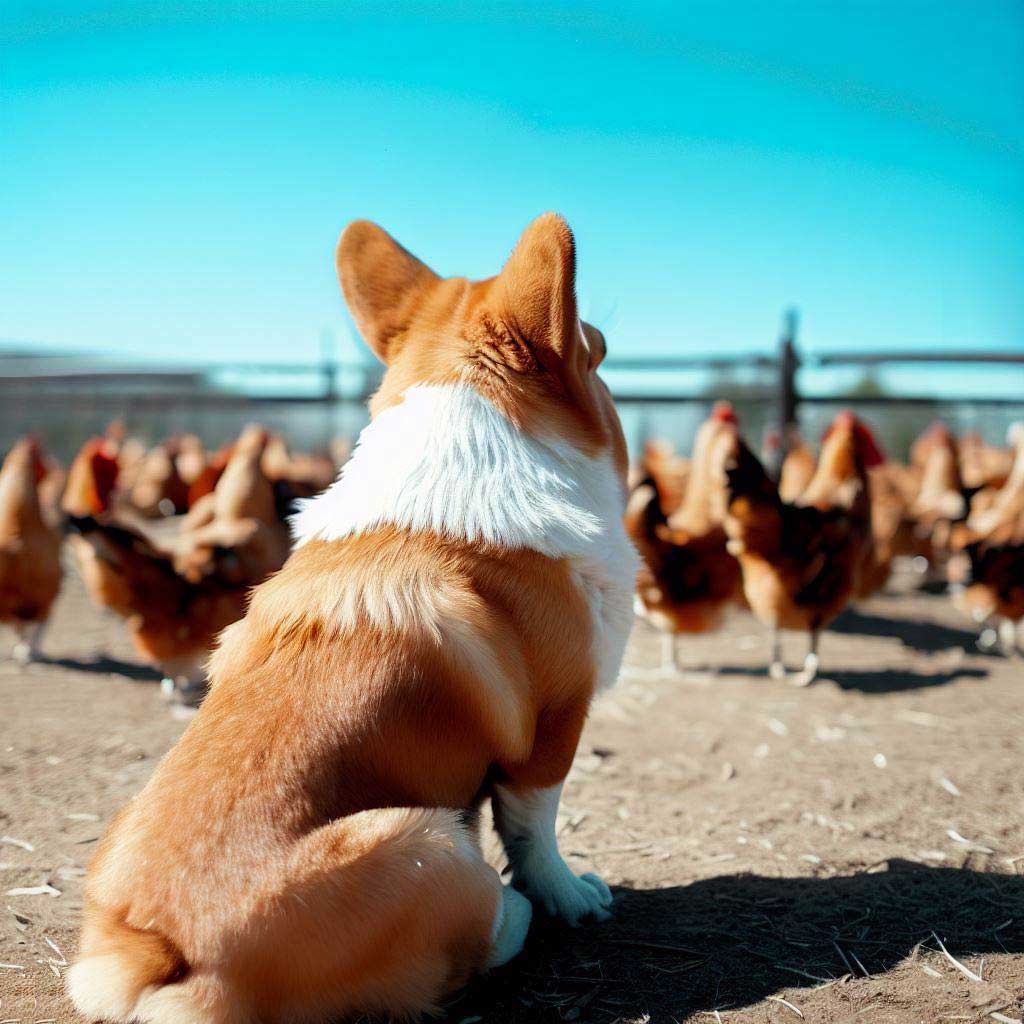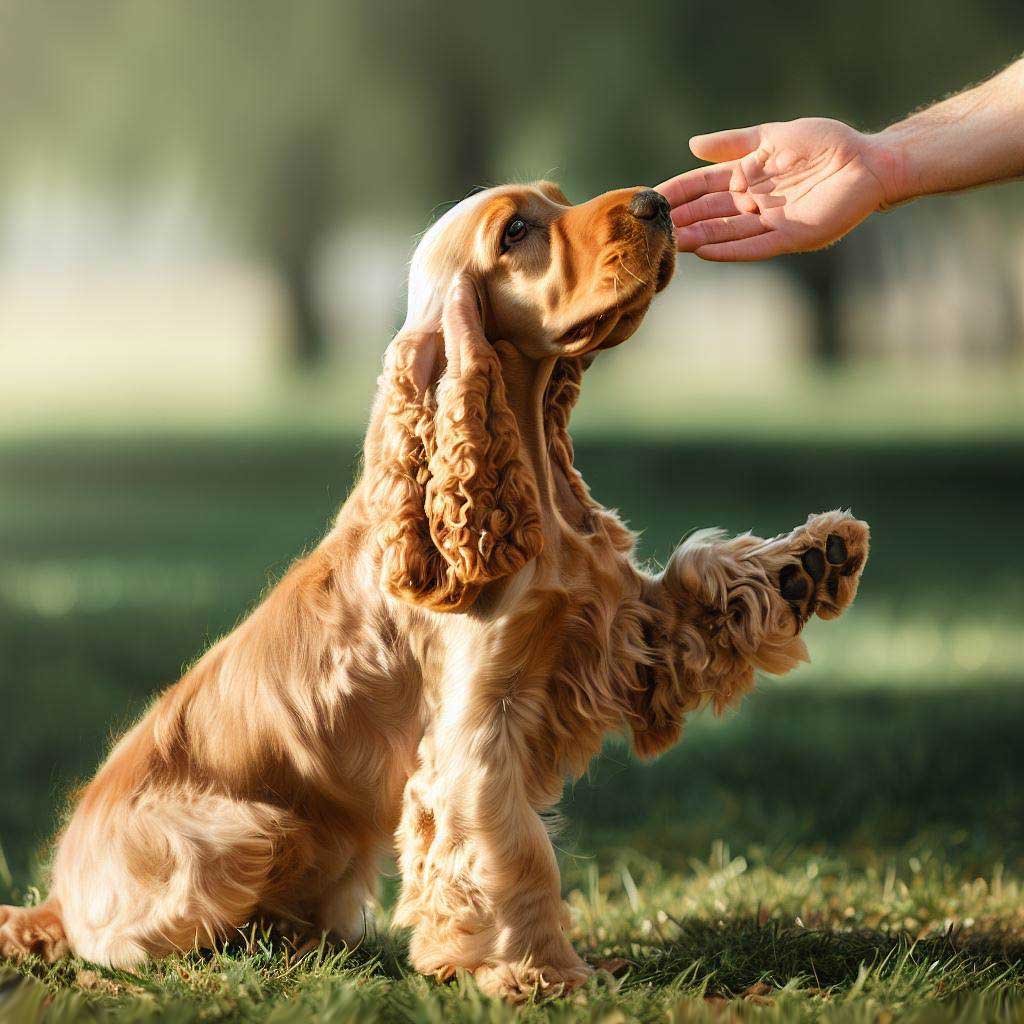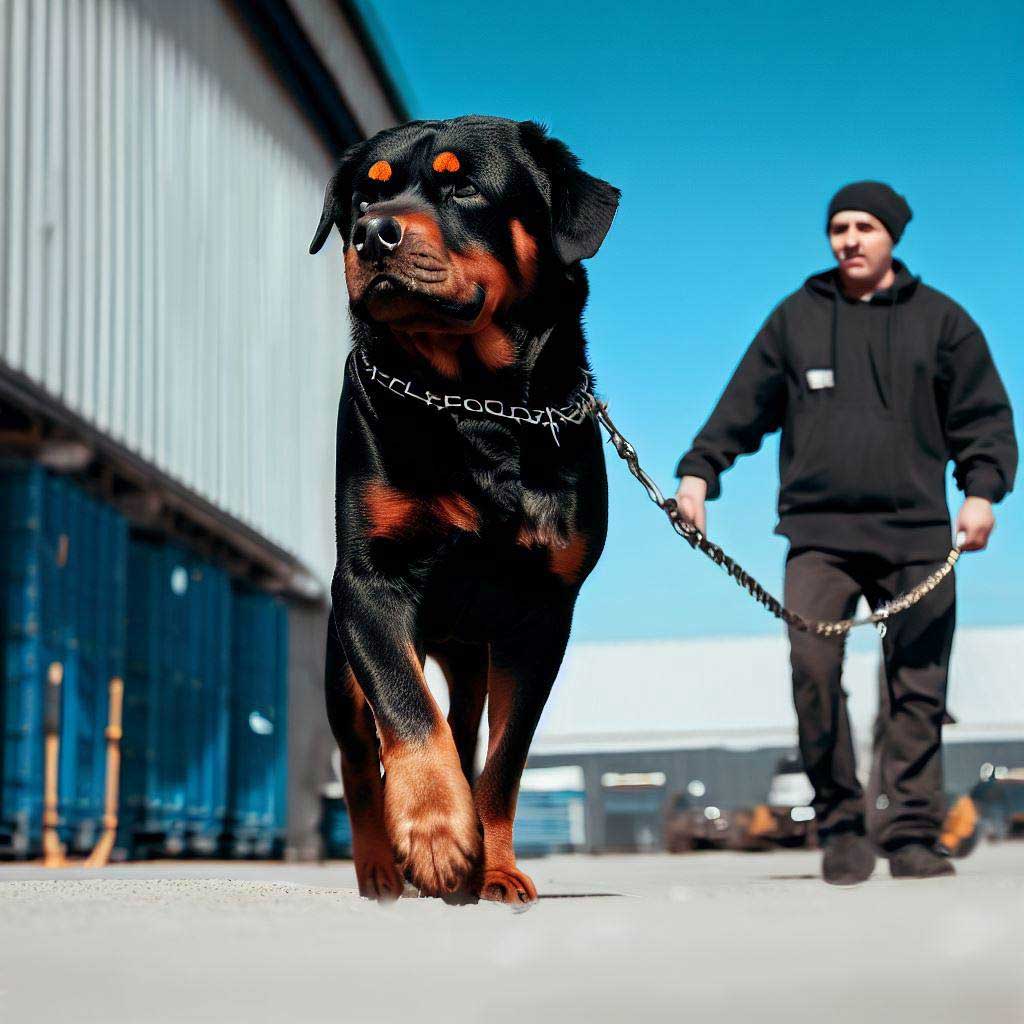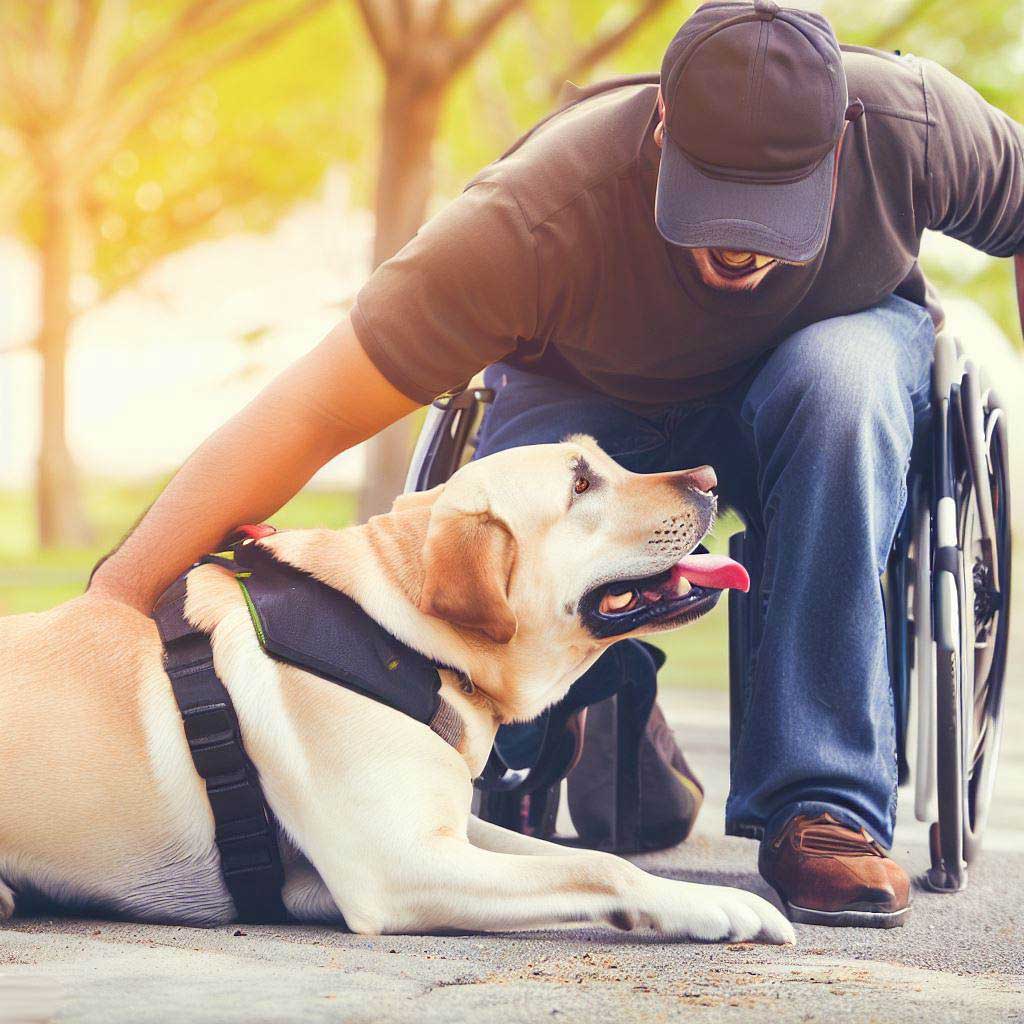Discover what are the 5 golden rules of dog training and transform your pup’s behavior. Master effective training with these proven tips!
Table of Contents
What Are The 5 Golden Rules of Dog Training?
- Consistency is Key
- Positive Reinforcement is More Effective Than Punishment
- Timing is Everything
- Train in Various Environments
- Keep Training Sessions Short and Fun
Now lets dive deeper and explain them all for you.
The Importance of Effective Dog Training
When you first consider the question, “What are the 5 golden rules of dog training?”, it’s essential to grasp the underlying significance – the importance of dog training. Effective dog training is more than just teaching your furry friend to sit or stay. It builds a foundation of trust between you and your pet, establishing a bond that goes beyond simple obedience.
With proper guidance, your dog learns to navigate the world around them confidently, reducing potential behavioral issues in the future.
Moreover, a well-trained dog is often a safer and happier one. When you’re out in public or even at home, you’ll have the peace of mind that your canine companion won’t act unpredictably.
Think of it this way: when you understand what are the 5 golden rules of dog training, you’re not just getting a list of tips. You’re acquiring a blueprint to ensure your dog’s emotional and physical well-being.
Common Misconceptions about Dog Training
In diving deeper, it’s also crucial to debunk some common myths. Many believe that training is about establishing dominance or showing the dog who’s the boss. However, modern dog training techniques emphasize positive reinforcement and building a relationship based on mutual respect, rather than fear.
Another prevalent misconception is that old dogs can’t learn new tricks. On the contrary, dogs of all ages are capable of learning and adapting, provided the training methods are consistent and appropriate for their life stage.
Additionally, some pet owners think that training should be a rigorous and structured process. In reality, integrating training into everyday life and making it a fun activity can often yield more effective results.
Lastly, there’s the idea that once a dog is trained, the work is done. But training is an ongoing process. As you delve further into understanding what are the 5 golden rules of dog training, you’ll realize that it’s about continuous learning and adaptation, for both you and your dog.
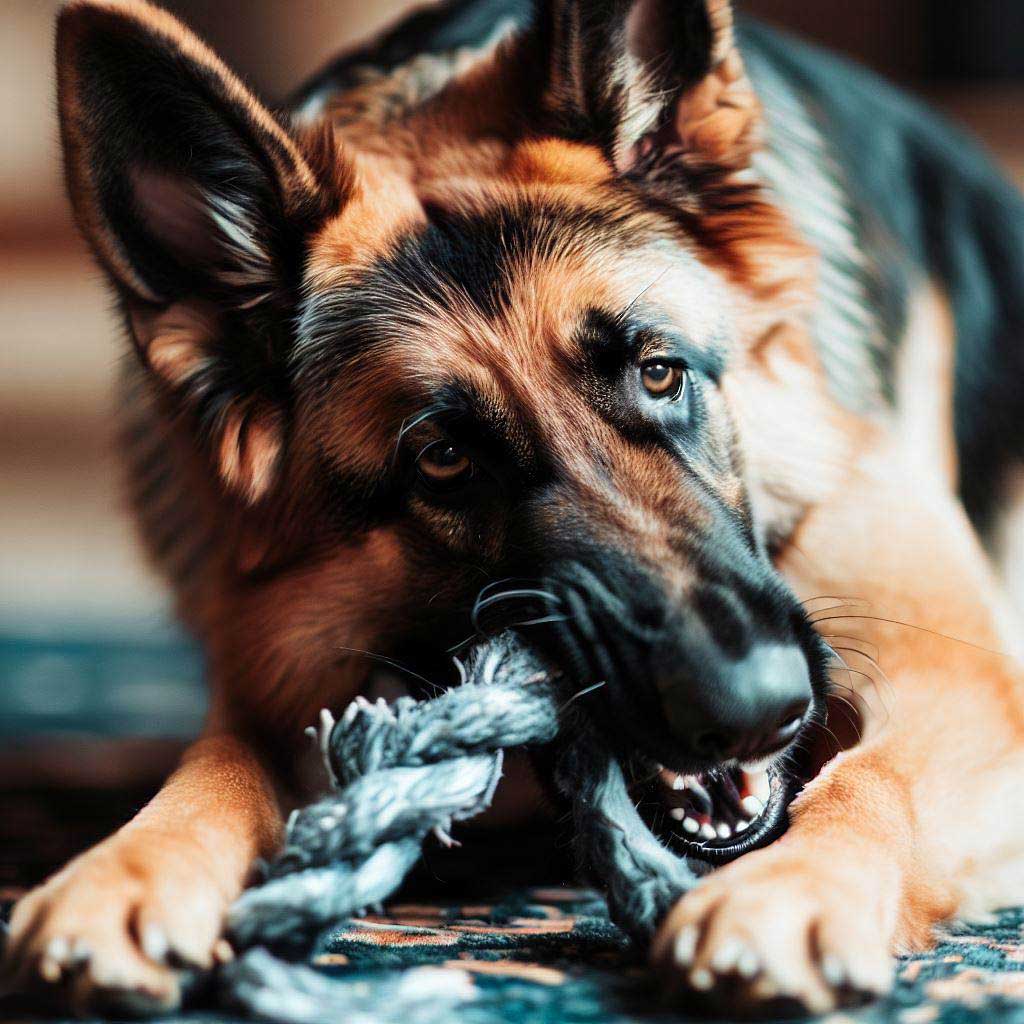
Golden Rule 1. Consistency is Key
When diving into what the 5 golden rules of dog training are, it’s imperative to grasp the cornerstone principle: consistency. A dog’s learning process is not dissimilar to ours and they thrive in an environment where expectations are clear and unchanging.
Why Consistency Matters:
Same command, same response: How dogs learn
Dogs, by nature, are creatures of habit. Every time you give a command and reward the correct behavior, you’re reinforcing that specific response. When you say “sit” and your dog sits, followed by a treat or praise, they start associating the command with the action and the subsequent reward.
If, however, today’s “sit” becomes tomorrow’s “sit down,” you risk confusing your dog. They might wonder, “Is this a different command, or did I do something wrong?”
Keeping the household on the same page
Understanding the fundamentals of these 5 golden rules requires a collective effort. If one family member allows the dog on the couch and another scolds them for it, your dog ends up in a whirlwind of mixed signals.
This inconsistency can lead to stress, uncertainty, and behavioral issues. So ensuring everyone in the household adheres to the same rules and commands is crucial for your dog’s clarity and well-being.
Mistakes to Avoid:
Switching command words
Imagine having to adapt to different rules every day – it’s disorienting, right? When you frequently change command words, your dog won’t know what’s expected of them. If you’ve used “come” and then suddenly switch to “here,” it can delay or even derail the training process.
Inconsistent rewards or punishments
Just as it’s essential to be consistent with commands, maintaining regularity in rewards or corrections is equally vital. If you reward your dog for a specific behavior today but ignore the same behavior tomorrow, it diminishes the incentive for them to repeat that action.
Golden Rule 2. Positive Reinforcement is More Effective Than Punishment
Delving deeper into the 5 golden rules of dog training introduces you to the powerful role of positive reinforcement. Time and again, studies and real-life examples have shown the profound impact of positivity over punitive measures.
The Science Behind Positive Reinforcement:
Building trust and rapport
Every treat, praise, or positive gesture you offer deepens the bond of trust between you and your dog. So positive reinforcement ensures that training sessions are more enjoyable and stress-free. Hence your dog will start to view training not as a chore, but as a fun activity that brings rewards.
Creating a willing and eager learner
Have you noticed how a dog’s tail wags faster when they know they’re about to get a treat? With positive reinforcement, dogs are not just passive participants but they become eager learners, always on the lookout for opportunities to earn rewards. This enthusiasm makes the learning process smoother and faster.
The Problem with Punishments:
Negative associations and potential behavioral problems
Punishments, especially when not timely or consistent, can lead to negative associations. For example, if you scold your dog long after they’ve dug up the garden, they might not link the punishment to the act. Instead, they might associate your return home with fear and anxiety. So over time, these negative experiences can result in more profound behavioral issues, including aggression or excessive fear.
The danger of fear-based training
While it’s essential to set boundaries, relying solely on fear-based methods can backfire. When a dog is trained under constant fear of punishment, they might obey, but not out of understanding or respect. Such an environment can lead to suppressed aggression, anxiety disorders, or an overly submissive demeanor.
A well-trained dog is not one that fears its owner, but one that understands and respects boundaries set out of mutual trust.
When we talk about the 5 golden rules, it’s crucial to remember that at the heart of these rules lies the well-being and happiness of your four-legged friend.
Their trust, respect, and love are treasures that, once earned, make the journey of dog ownership all the more rewarding.
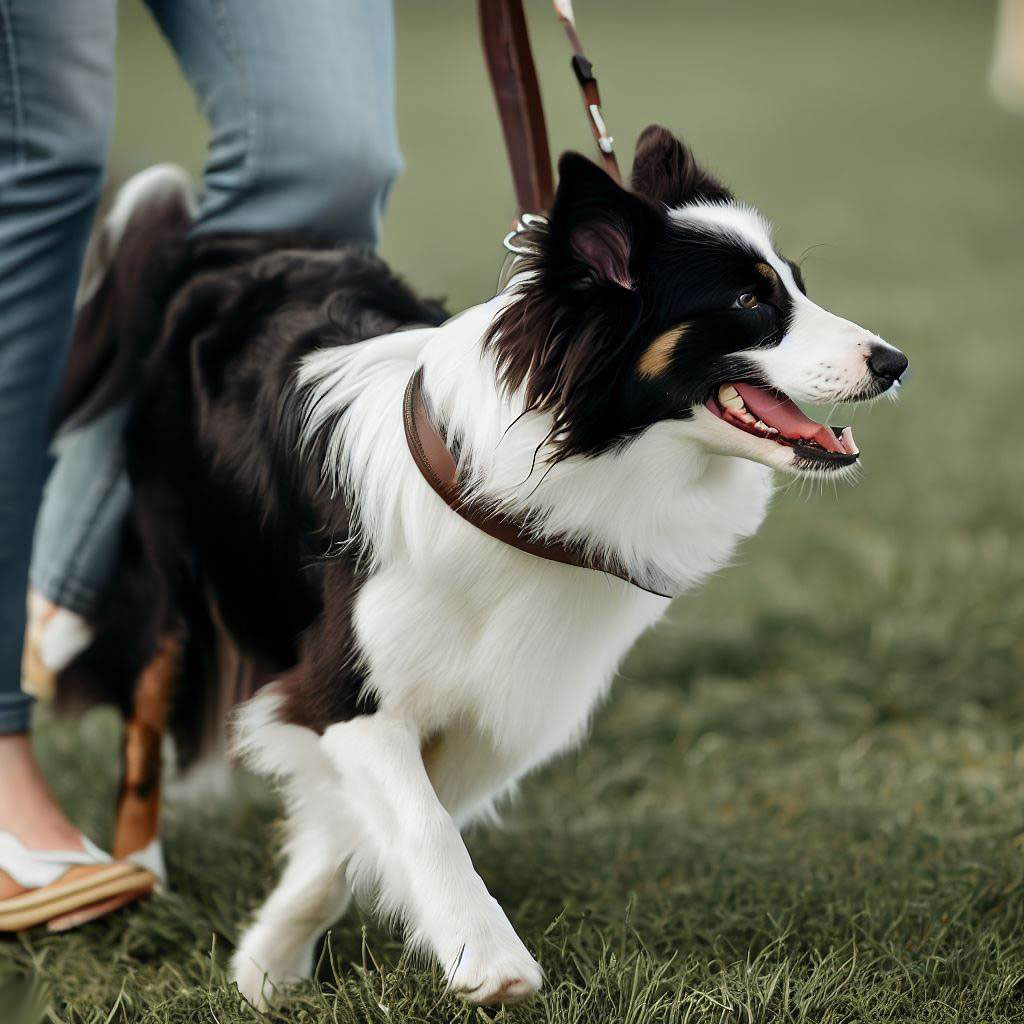
Golden Rule 3. Timing is Everything
Understanding the essence of timing can’t be overstated. Your dog’s cognitive processes differ from ours, and their perception of cause and effect is intimately linked with time.
The Power of Immediate Feedback:
How dogs understand time and response
While dogs have impressive memories, their ability to associate actions with consequences is strongly tied to immediate feedback. When they perform an action, be it good or bad, their brains are primed for an immediate response. For instance, if they sit when you command them to and receive a treat right away, they can directly link the command with the action and the ensuing reward.
The critical window for rewards and corrections
Veterinary and training experts emphasize that the window for reinforcing or correcting behavior is surprisingly short, often mere seconds. This immediate feedback mechanism ensures your dog can establish a solid connection between their actions and your response. So, when diving deeper into “what are the 5 golden rules of dog training“, always remember that the sooner you can provide feedback after a behavior, the better your dog will understand the desired outcome.
Mistakes to Avoid:
Delayed reactions
Imagine getting feedback on a project weeks after submission. The impact and relevance of the feedback would be diluted, wouldn’t it? Similarly, if you find a chewed shoe hours after the deed was done and then scold your dog, they are unlikely to understand why they are being reprimanded. Their actions at the moment of correction will be what they associate with the punishment, not the shoe they chewed hours ago.
Being unobservant of dog’s cues
Your dog is constantly communicating with you, albeit non-verbally. If you’re not attentive to their cues, you might miss out on timely interventions or rewards. For instance, if your dog looks at you expectantly after following a command, that’s your cue to reward or praise them.
Golden Rule 4. Train in Various Environments
As you navigate through the rules, you’ll soon realize that training isn’t confined to your living room. The broader world is teeming with distractions, and preparing your dog to handle them is paramount.
Benefits of Diverse Settings:
Adapting to distractions
Your dog might be an absolute star when practicing “stay” in your quiet backyard, but what happens when a squirrel dashes by in the park?
Training in diverse environments ensures that your dog learns to listen to you, irrespective of what’s happening around them. It’s all about building focus and ensuring that your commands have relevance in every setting.
Ensuring commands are obeyed universally
Another key factor that is essential to understand is that commands aren’t situational. A “come” command should be obeyed whether you’re in your kitchen or amidst a bustling street market. By training across various scenarios, you reinforce the universality of your commands.
Starting Small:
Training at home before going out
Before you dive into the world’s distractions, start in a controlled environment like your home. Here, your dog can grasp the basics without overwhelming stimuli. Once they consistently obey commands at home, it’s a sign they’re ready for more challenging environments.
Gradually introducing more distractions
Imagine learning to drive in the middle of rush hour traffic; daunting, right? Similarly, for your dog, being thrust into a highly distracting environment can be overwhelming. Start with quieter outdoor spots, like an early morning park. As your dog grows more confident and focused, gradually increase the level of distractions.
As you delve into further, always keep your dog’s well-being at the forefront. Training is as much about building a bond as it is about obedience.
With patience, consistency, and understanding, you’ll create a trusting and fulfilling relationship with your furry friend.

Golden Rule 5. Keep Training Sessions Short and Fun
As we journey through to the final golden rule of dog training, it’s crucial to recognize the importance of keeping your dog’s training sessions both brief and enjoyable. This rule emphasizes the balance between discipline and play, ensuring your furry friend remains motivated throughout the learning process.
The Attention Span of Dogs:
Why shorter sessions work better
Dogs, much like most humans have a limited attention span, no offence anyone. Particularly in younger pups, the capacity to focus diminishes rapidly. Therefore, shorter training bursts, typically ranging from 5 to 15 minutes, prove to be far more effective. Not only do they align well with a dog’s natural energy and concentration curves, but they also ensure that the training remains a positive experience. After all, prolonged sessions can lead to frustration, fatigue, and decreased enthusiasm, hindering the learning process.
Keeping the dog engaged and eager
Shorter sessions cater to your dog’s eagerness to please. By wrapping up before their attention wanes, you leave them wanting more. This anticipation means that they’ll be all the more excited for the next session, associating training with fun and positive experiences. Moreover, in these brief sessions, it’s crucial to reward good behavior immediately, further solidifying their association of training with positive outcomes.
Incorporating Play into Training:
The balance between learning and fun
One might wonder, how play fits into the equation. Well, play is an intrinsic part of a dog’s nature. And by blending training with play, you’re tapping into their innate behaviors, making the lessons more natural and enjoyable. Training should never feel like a chore, neither for you nor your dog. So by introducing elements of fun ensures your dog’s spirits remain high, making them more receptive to learning.
Using toys and games to reinforce commands
Toys aren’t just tools for entertainment; they can be powerful training aids. For instance, if you’re teaching the command “drop it“, using a favorite toy can make the lesson more tangible. Similarly, games like fetch can be utilized to reinforce commands like “come”, “stay”, and “go”. This approach not only reinforces the commands but also ensures that your dog perceives these training sessions as interactive playtimes.
The 5 Golden Rules Of Dog Training: Conclusion
Incorporating the 5 golden rules into your dog’s upbringing and daily routine pays dividends in creating a harmonious relationship between you and your furry companion.
The lifelong benefits of adhering to the golden rules
By following these golden rules, you’re setting the foundation for a lifelong bond with your dog. This bond is characterized by mutual respect, trust, and understanding.
When dogs are trained with consistency, positivity, timely feedback, adaptability, and a blend of discipline and play, they not only become obedient but also develop a sense of security. They understand their boundaries, feel rewarded for their good behaviors, and most importantly, they trust that their human companions will treat them with fairness and love.
Adapting and evolving training techniques as needed
Embarking on the journey of training a dog, whether they’re a bubbly puppy or a contemplative senior, is an exercise in patience, love, and consistency. The road can be long, and each dog presents its unique set of challenges. Yet, with repeated efforts and a reservoir of patience, the bond you cultivate is unparalleled.
When the road gets a bit rocky, and you seek some guidance, the online world extends a helping hand. Among the myriad of resources, online dog training courses stand out for their accessibility and depth. If you’re in search of a guiding star, “Best Online Dog Training Courses: Any Dog Will Love” meticulously reviews 15 courses, with a keen eye on the top three that promise to make your journey smoother.
It’s worth noting, as you internalize these 5 golden rules of dog training, you discover that every dog is unique. While these rules provide a robust framework, it’s essential to observe your dog and adapt your techniques to suit their individual temperament, learning style, and pace. Be ready to evolve your methods, always prioritizing your dog’s well-being, comfort, and happiness.
In the end, training is less about commands and more about communication. It’s a dialogue between you and your dog, one that deepens your bond and ensures that both of you lead happy, fulfilling lives together.

FAQ Section: What Are The 5 Golden Rules Of Dog Training?
Why is consistency so important in dog training?
Consistency is paramount because dogs thrive on predictability. When they receive the same command and response, they can more easily make connections. Imagine learning a language where the words kept changing; it’d be confusing! In the context of “what are the 5 golden rules of dog training”, consistency stands as the foundation upon which all other rules are built.
How often should I reward my dog during training sessions?
It’s best to reward your dog immediately after they display the desired behavior, especially during initial training stages. This immediate positive reinforcement helps them associate the behavior with the reward. As they become more consistent, you can start using variable rewards, which means not rewarding them every single time but sporadically.
What should I do if my dog isn’t responding to training?
Firstly, evaluate your methods. Are you being consistent and using positive reinforcement? Sometimes, a change in approach or even rewards can make a difference. If you’re adhering to “what are the 5 golden rules of dog training” and still facing issues, consider seeking professional help or assessing if there are underlying health issues.
Are there specific types of rewards that work better for training?
Different dogs have different motivators. While treats are a common reward, some dogs might be motivated by praise, toys, or playtime. It’s essential to find what works best for your dog and leverage that during training.
Why is punishment not a recommended method for training dogs?
Punishment can create negative associations, leading to fear, aggression, or submissive behaviors. Positive reinforcement, one of the pillars of “what are the 5 golden rules of dog training”, encourages dogs to perform the desired behavior willingly without fearing consequences.
How long should each training session be?
Typically, sessions should be short, around 5 to 15 minutes, especially for puppies. Shorter sessions align with a dog’s attention span and ensure they remain engaged.
My dog gets distracted easily. How can I improve their focus during training?
Start training in a quiet environment with minimal distractions. As they progress, gradually introduce more distractions, ensuring they still respond to commands. Remember, one of the golden rules emphasizes training in various environments to adapt to distractions.
Is it ever too late to train an older dog?
No, it’s never too late. While younger dogs might learn faster due to their developmental stage, older dogs can still be trained. It might require more patience, but with consistent application of “what are the 5 golden rules of dog training”, progress is achievable.
Can I train my dog without professional help?
Absolutely! With the right resources, patience, and by adhering to the golden rules of dog training, many dog owners achieve success. However, if faced with specific challenges, seeking professional guidance might be beneficial.
How can I ensure all members of my household are consistent in training the dog?
Communication is key. Ensure everyone understands and applies “what are the 5 golden rules of dog training”. Regularly discuss techniques, commands, and rewards to ensure consistency.
What are the three keys to dog training?
The three fundamental keys are consistency, positive reinforcement, and understanding your dog’s individual needs and motivators. These components create a strong foundation for effective training.
What are the 6 basic commands for dog training?
The six basic commands are: Sit, Stay, Down (or Lie Down), Come, Heel, and Off (or Leave It). Mastering these can lead to a well-behaved dog.
What is the number one rule in dog training?
The top rule is consistency. Whether you’re exploring “what are the 5 golden rules of dog training” or any other methodology, consistency remains a universal principle in dog training.
What commands should every dog know?
Every dog should ideally know the basic commands: Sit, Stay, Come, Down, Heel, and Off. These commands ensure safety, control, and a harmonious relationship between dog and owner.
What is the hardest thing to train a dog to do?
This varies from dog to dog. However, recall, especially in high-distraction environments, often poses a significant challenge. With the principles of “what are the 5 golden rules of dog training”, though, even challenging tasks become achievable.
What age is a dog hardest to train?
Adolescent dogs, typically between 6 to 18 months, can be more challenging due to their increased energy and emerging independence. Yet, with persistence, they too can be trained effectively.
What is the fastest way to train a dog?
The quickest method is consistent, positive reinforcement-based training. While “what are the 5 golden rules of dog training” doesn’t promise overnight results, applying them ensures efficient and lasting outcomes.

What are the 3 P’s of dog training?
The 3 P’s of dog training are Patience, Persistence, and Praise. These principles emphasize the importance of remaining calm, staying consistent with training, and positively reinforcing desired behaviors.
What is the golden rule for dogs?
The golden rule for dogs is treating them with consistency and compassion, much as you would like to be treated. It’s about understanding their needs and communicating in a way that fosters mutual respect and trust.
What is the number one rule in dog training?
The number one rule in dog training is consistency. Ensuring that commands, responses, rewards, and even tones of voice are consistent helps the dog to learn and understand what is expected of them more quickly.
What are the 7 most important dog commands?
The 7 most important dog commands are Sit, Stay, Down (or Lie Down), Come, Heel, Off (or Leave It), and No. These foundational commands are vital for basic obedience and safety.
Can you apply the golden rules to an alpha who is the leader of a pack?
Yes, the five golden rules of dog training can be applied even to an alpha dog or leader of a pack. They focus on universal principles like consistency and positive reinforcement, which are applicable across different temperaments and social standings within a pack.
Can dog training rules apply to all dogs?
Yes, dog training rules like the five golden ones are designed to apply to all dogs, regardless of breed, age, or size. Adjustments might be necessary for specific needs, but the fundamental principles remain the same.
What is the rules of seven dog training?
The “Rule of Sevens” in dog training is a guideline that by seven weeks of age, a puppy should have experienced seven different surfaces, played with seven types of objects, been in seven different locations, etc. It encourages diverse experiences to create well-rounded and adaptable adult dogs.
Tips for my first dog training:
Start with basic commands, be consistent with rewards and punishments, and keep training sessions short and engaging. Understanding your dog’s unique motivators and temperament will make the process more effective.
What are dog training techniques for small dogs?
Training small dogs requires the same foundational principles as larger ones but may need adjustments in reward size, leash type, or handling techniques. Ensuring that commands and expectations are consistent is key, regardless of size.
What is the best dog training order of commands?
The best order usually begins with simple commands like Sit and Stay, followed by Down, Come, Heel, Off, and No. Starting with basics and gradually introducing more complex commands builds a solid obedience foundation.
What’s the best free online dog training guide?
The best free online dog training guide can vary depending on individual needs and preferences. Many find websites like the American Kennel Club (AKC) and YouTube channels run by professional dog trainers to be valuable free resources. Always ensure that the guide aligns with positive reinforcement methods and the principles aligned with the 5 golden rules of dog training.
What is a dog training basic obedience lesson plan?
A dog training basic obedience lesson plan is a structured guide to help dog owners and trainers impart essential manners and commands to dogs. The plan typically progresses from simple to more complex tasks, ensuring that foundational learning occurs before advancing to higher levels. Here’s a brief overview:
1. Introduction to Training:
Understanding Dog Behavior: Observing the dog’s natural responses and tailoring the training accordingly.
Setting Goals: Identifying what you want to achieve and in what time frame.
2. Basic Commands:
Sit: Teaching the dog to sit on command, usually by guiding with a treat.
Stay: Training the dog to remain in place until released.
Come: Teaching the dog to come to you when called.
Down: Guiding the dog into a lying position.
3. Walking Skills:
Leash Training: Teaching the dog to walk beside you without pulling or lagging.
Heel: Training the dog to walk close to your side.
4. Behavioral Skills:
No Biting: Teaching appropriate play without nipping.
No Jumping: Discouraging jumping up on people.
5. Socialization:
Meeting Other Dogs: Encouraging positive interactions with other dogs.
Handling New Environments: Exposing the dog to various surroundings to enhance adaptability.
6. Reinforcement Techniques:
Positive Reinforcement: Utilizing treats, praise, or play to reward desired behavior.
Avoiding Punishment: Focusing on encouragement and redirection rather than punishment.
7. Ongoing Practice and Adaptation:
Regular Short Sessions: Keeping training sessions short and engaging to retain the dog’s attention.
Adjusting Techniques: Continually evaluating and adapting strategies to suit the dog’s learning pace and personality.
This basic obedience lesson plan, designed in alignment with the 5 golden rules of dog training, sets the stage for a well-mannered, responsive pet. It provides the framework for more advanced training if desired, emphasizing a positive and consistent approach.


